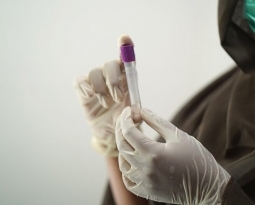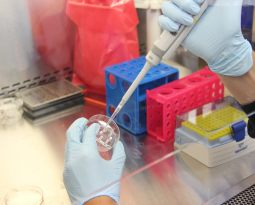Oklahoma Patent of the Month – October 2021
Natural gas transmission pipelines are connected to in-field gas flow meter runs with meters that measure the transfer of gas flowing along the lines between pipeline companies. The pipelines might also use turbine or orifice meters. Regardless of meter type, the meter’s accuracy is known to erode over time. Even small errors or inaccuracies can have massive financial impacts due to the sheer volume of the gas being transferred. Current calibration methods require the pipeline to be temporarily shut down while the meter is sent to a calibration laboratory which uses a reference bank of meters. No gas flows through the line until the meter is calibrated and back in place. Obviously, this is not ideal for anyone involved in the production and transport of natural gas.
Big Elk Energy Systems, LLC has a team adept at innovation solutions for the entire energy industry. They recently developed a portable verification system that can verify a gas pipeline flow meter in-field. The verification system can move from one meter to another and temporarily connect downstream of the main pipeline’s meter run or station. The system has a control valve which allows volume measurement at different flow velocities to be verified. It connects to the pipeline by an adjustable pipeline section which can extend either horizontally or vertically and can swivel easily. This versatility makes it incredibly easy to attach to meters in any environment. This system cuts the pipeline downtime from 1-2 weeks in traditional methods to just a single circuit between the meter run, verification system, and main pipeline. To complete the testing, a reference meter run is connected to the field meter run and pipeline and used to compare the validation results against a controlled value.The reference meter run is confirmed to have proper calibration, so velocities are tested using the reference meter run and the in-field meter run to see if there is a significant difference. If, after testing, the meter does in fact need to be calibrated, the reference meter run may be temporarily left in place so that natural gas may continue to flow while the field meter run is sent away. By allowing in-field testing, the industry will get to enjoy significantly less downtime and improved productivity of gas flow.
Are you developing new technology for an existing application? Did you know your development work could be eligible for the R&D Tax Credit and you can receive up to 14% back on your expenses? Even if your development isn’t successful your work may still qualify for R&D credits (i.e. you don’t need to have a patent to qualify). To find out more, please contact a Swanson Reed R&D Specialist today or check out our free online eligibility test.
Who We Are:
Swanson Reed is one of the U.S.’ largest Specialist R&D tax advisory firms. We manage all facets of the R&D tax credit program, from claim preparation and audit compliance to claim disputes.
Swanson Reed regularly hosts free webinars and provides free IRS CE and CPE credits for CPAs. For more information please visit us at www.swansonreed.com/webinars or contact your usual Swanson Reed representative.

















